Your Complete Guide to Islas Ballestas Tours: How to Visit Poor Man’s Galapagos in Peru?

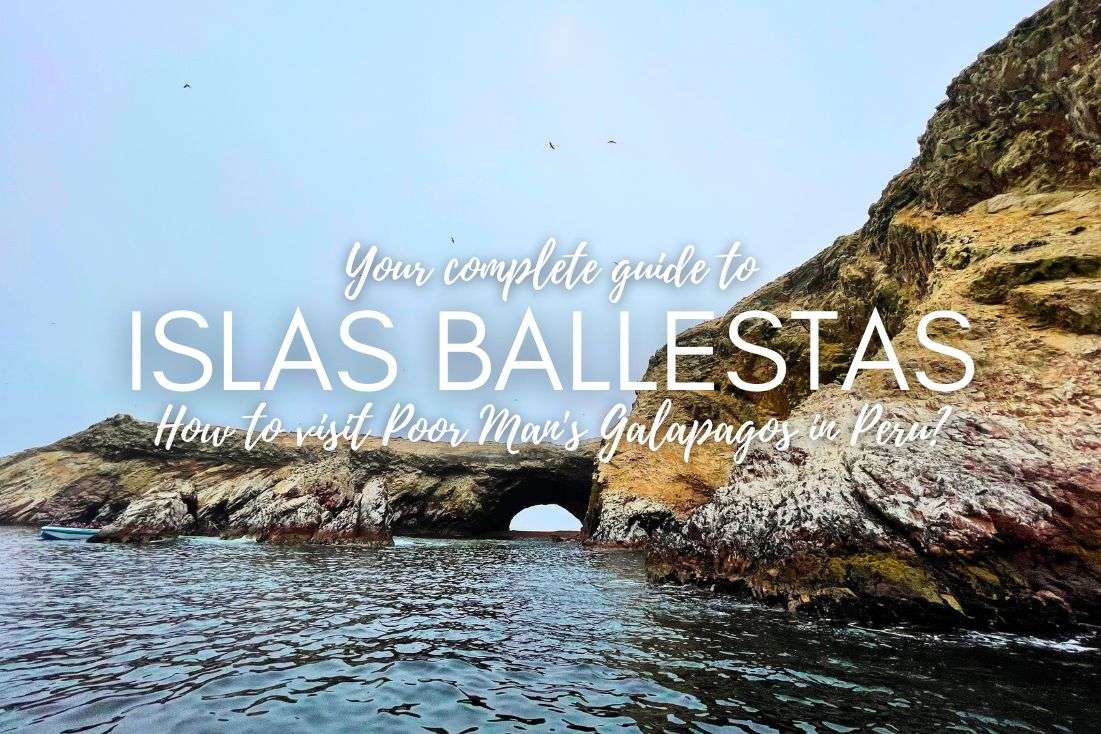
Can the Islas Ballestas really measure up to the Galapagos? What’s the Ballestas Islands boat tour like, and why are these islands packed with marine life?
From the striking Humboldt penguins and barking sea lions to the historic geoglyphs and layers of guano (yes, bird poop is a big deal here), the Ballestas Islands have some surprises in store. I traveled to Peru, did the tours, hunted down the info, and now I’m here to spill it all.
This guide will cover everything from the best time to visit, what to expect from the boat tours, why you need to get on the first morning tour, and how to make the most of Paracas, so you can decide if these islands, nicknamed the “Poor Man’s Galapagos,” deserve a spot on your Peru itinerary.

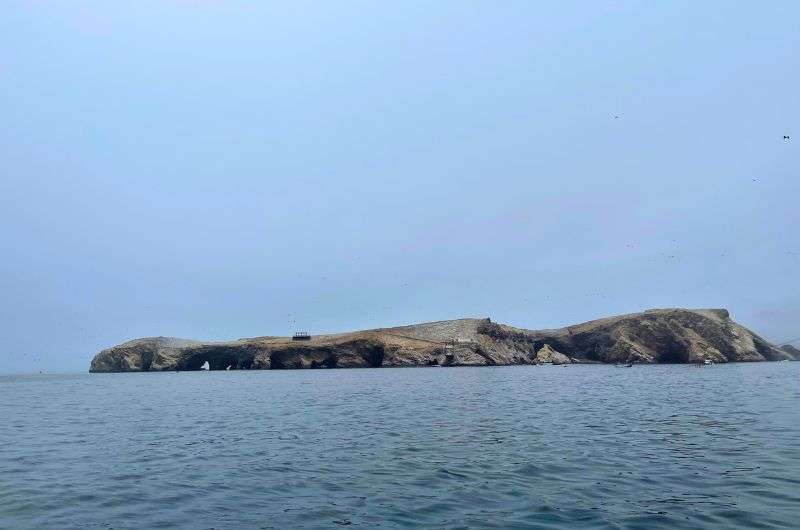
We’re heading towards Ballestas Islands
Ballestas Islands tour summary: Key points to know
- Location: The Ballestas Islands, also known as "Poor Man’s Galapagos," are rocky islands off the southern coast of Peru near Paracas.
- How to get there: Only accessible by boat tours departing from the El Chaco pier in Paracas.
- Tour price: Approximately USD 25 per person for a group tour. Extra fees may apply for entrance to the national reserve and hotel pickups.
- Tour duration: 2 hours, including a 40-minute boat ride each way and about 30 minutes near the islands for wildlife viewing.
- What to expect:
- Marine wildlife galore! The islands are famous for sea lions, Humboldt penguins, fur seals, and countless guano birds.
- You’ll stay on the boat—landing on the islands isn’t allowed—but you’ll get up close to the rock formations, arches, and natural habitats. And birds. And guano.
- A brief stop near El Candelabro, an ancient geoglyph similar to the Nazca Lines.
- Marine wildlife galore! The islands are famous for sea lions, Humboldt penguins, fur seals, and countless guano birds.
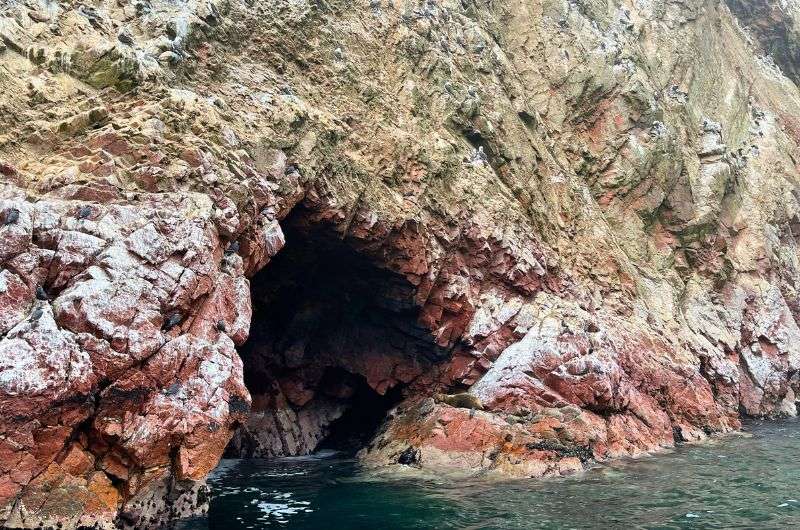
Ballestas Islands
- Best time to go to Islas Ballestas: Tours run year-round, but high tourist season is December through February. That’s why you’ll go in shoulder season instead.
- The sooner the better: It’s best to go in the early morning for calmer seas.
- Fun fact: The islands are covered in valuable guano—seabird droppings—once harvested like gold by the Peruvian government due to its use as a fertilizer.
My top tips for taking an Islas Ballestas tour:
- Prepare for a bumpy, windy, and sometimes wet ride on the boat tour. Dress for the occasion and remember this isn’t a pleasure cruise—it’s a speedboat tour with plenty of splashes.
- Top tip: opt for an early morning tour to avoid the afternoon’s choppier waters. You’ll appreciate the smoother seas and calmer start, especially if you’re prone to seasickness.
- Booking in advance is also a good idea. The more comfortable Islas Ballestas tours that include hotel pick-up and drop-off tend to sell out early. We had to make our own way to the pier. Can you imagine… the horror!? Just slightly kidding.
Sometimes, all you need to do is take the first step... I've filtered out the best hotels in Paracas for you
Save it for yourself to come back to later, or share with your friends on social media!
I've already planned your ititnerary for the trip, complete with my travel tips.
1. What are the Islas Ballestas (Ballestas Islands)?
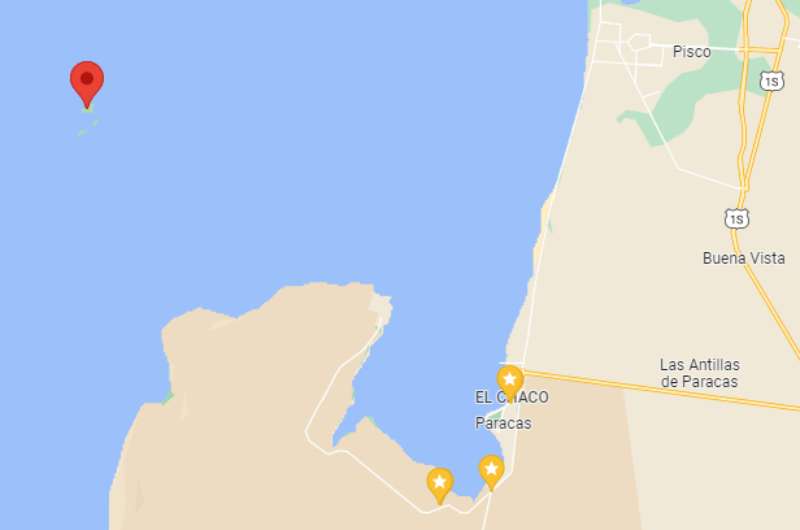
Ballestas Islands map: Those little green spots are it!
If you’re picturing palm tree-fringed islands and dreamy beaches, you’re not thinking of the right type of island. The Islas Ballestas (the Ballestas Islands), sometimes called the “Poor Man’s Galapagos,” are a small group of rocky islands just off Paracas Peninsula that rise dramatically from the Pacific Ocean. There’s no white sand, no greenery, and no chance for us mere humans to set foot on land here.
Why “Poor Man’s Galapagos”?
The Islas Ballestas pack in the wildlife thrills without the hefty price tag. You’ll find sea lions, Humboldt penguins, and flocks of seabirds, all accessible via a quick boat ride from Paracas. It’s rugged, wild, and offers a semi-Galápagos experience—minus the hefty price tag. Unfortunately, also minus the pristine isolation.
So, instead of this:
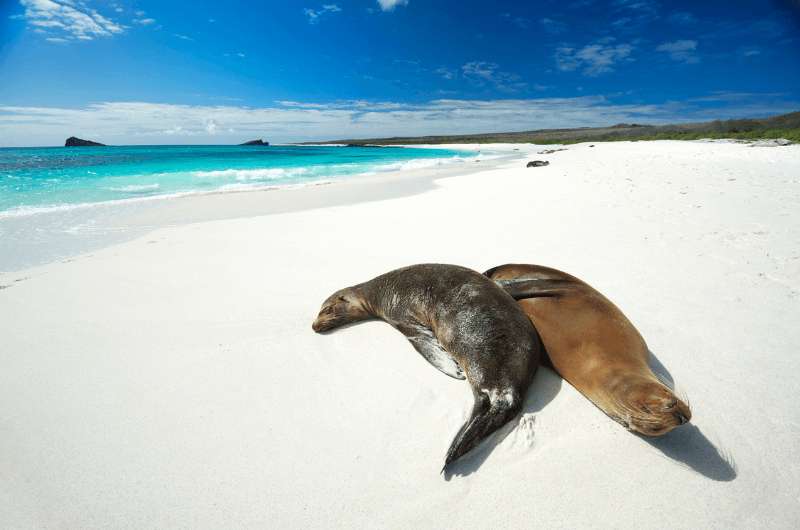
Chillaxed Galapagos residents
…you’ll get a lot of this:
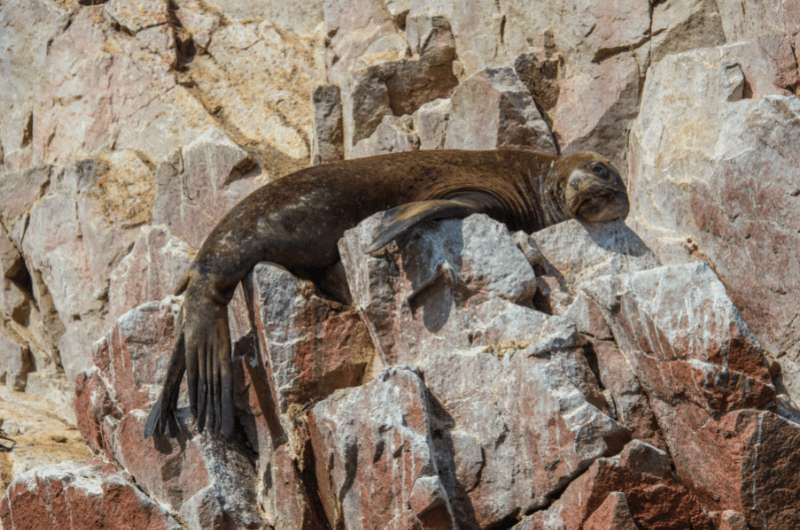
Dreaming on Poor Man’s Galapagos of the soft beaches on the real Galapagos
The rocks form fun shapes and natural arches, which the tour boats glide under to give everyone a great look (since landing on the islands is strictly off-limits). While the Ballestas Islands are certainly worth visiting if you’re into wildlife, I still say that the Paracas National Reserve is the clear number one attraction in this area.

2. Are the Islas Ballestas worth visiting?
The Ballestas Islands are worth seeing if you’re interested in wildlife and marine animals. But if animals aren’t your thing and you get seasick easily, save yourself the trouble, scroll through some online photos, and head elsewhere in Peru.
Fun fact: The Ballestas Islands aren’t part of the Paracas National Reserve (Reserva Nacional de Paracas). Instead, they’re under another reserve managed by the Peruvian government called La Reserva Nacional Sistema de Islas, Islotes, y Puntas Guaneras—it’s basically a national reserve system for protecting and mining guano (aka bird poop), but more on that later.
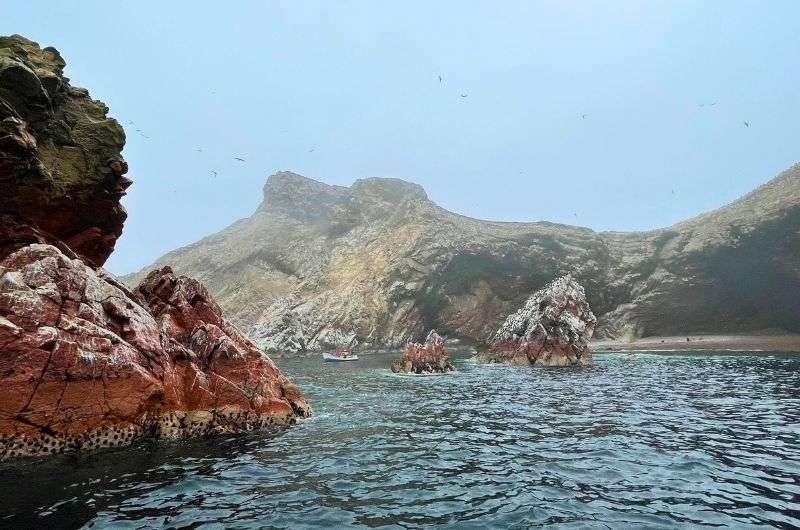
A cool place on the Peruvian coast—the Ballestas Islands!
3. How do I get to Islas Ballestas? Boat tour information
You need to take a tour boat to get to Islas Ballestas. Your Ballestas Islands tour will start from El Chaco pier in Paracas. There is no other way to see the Islas Ballestas.
If you’re unlucky and can’t snag one of the luxury Islas Ballestas tours that include pickup from your hotel, you’ll need to make your own way to the pier. Just type Marina Turistica de Paracas into Google Maps—it’s where you’ll find parking (ARS 3 per hour), and from there, you’re set to go.
The pier is a busy spot. You’ll see groups of tourists and locals alike, all heading out to the islands or just returning. But surprisingly, the whole process is well-organized. Life jackets are provided for everyone’s safety on the 40-minute boat ride to the Ballestas Islands.
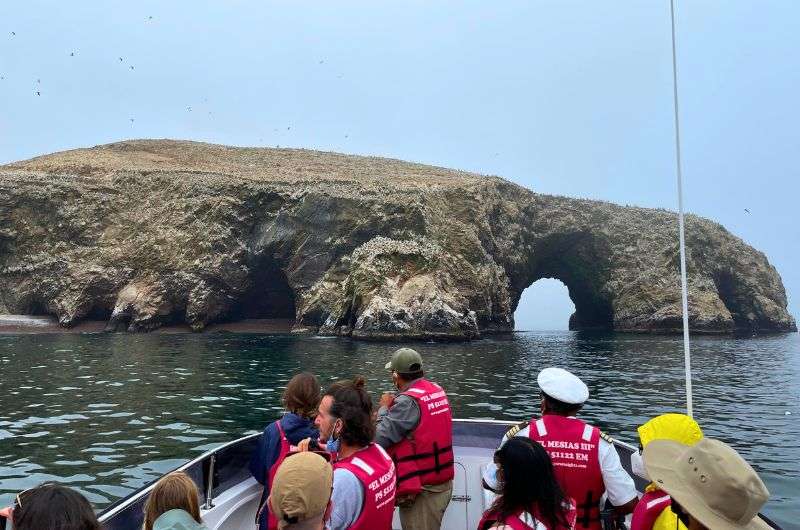
Hop on a boat with other tourists, and take the Ballestas Islands tour
Big pull for Paracas: Plan to stay 3–4 nights in Paracas, especially if you want to visit Paracas National Park and enjoy the coast. There are so many things to do in and around Paracas, it was really a fantastic addition to our Peru trip. And one of my favorite hotels in Peru is the The Legend Paracas Resort—it’s a beachside gem! (When we stayed there it was a DoubleTree by Hilton, so let’s see what Hyatt does with the place now that it took over.)
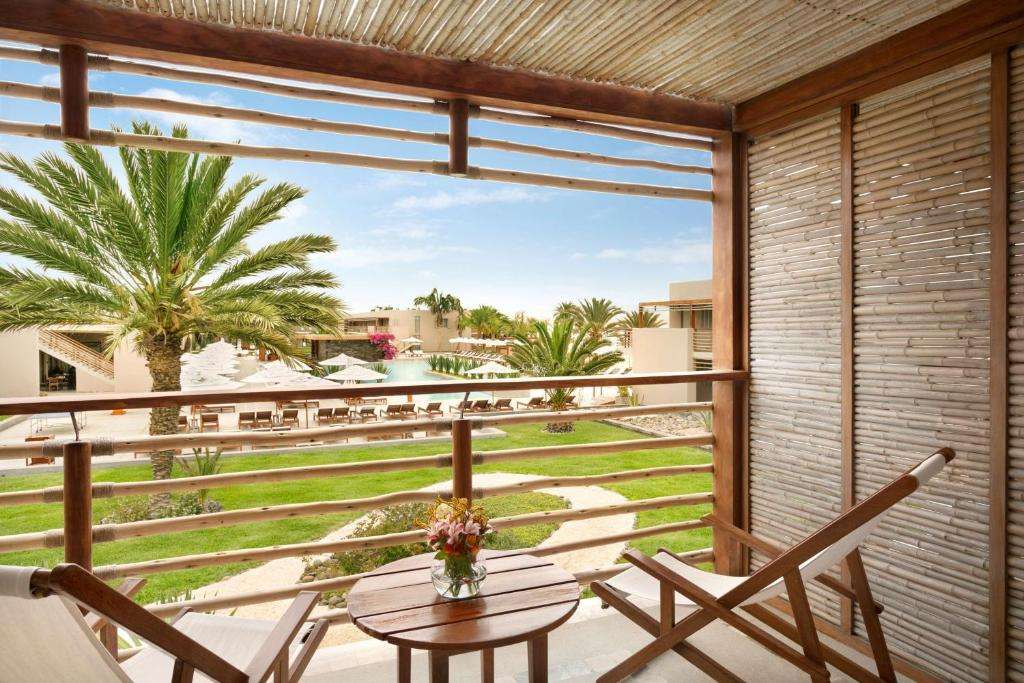
4. How much is the boat tour in Islas Ballestas? USD 25
The cost of an Islas Ballestas tour depends on the type of experience you’re after and what the particular tour company is offering. Group tours generally cost around USD 25 USD per person, though it’s a good idea to check whether this includes the ARS 11 (USD 3) entrance fee to the national reserve. If not, you’ll pay that fee separately at the pier.
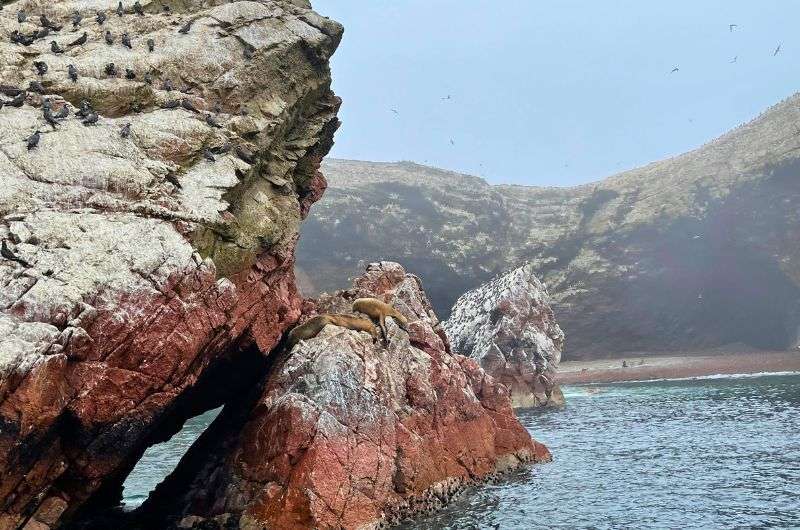
Another one of my photos from the boat tour
For added convenience, some tours offer hotel pick-up and drop-off in Paracas, which is great if you prefer a door-to-door option. Other times, transportation to the pier can cost extra, so just read the fine print.
Before choosing a tour, consider boat size: some tours take larger boats with a capacity of 40 people, some are smaller, for 20 passengers maximum. Larger boats are better if you get seasick, smaller boats are better if you don’t like crowded tours. There are private yachts available for hire, too, if that’s something that appeals to you and your wallet.
5. What to expect on an Islas Ballestas tour? This is my experience
Once you’ve found your seat on the boat, get ready for a 40-minute ride across the Pacific Ocean to reach the Islas Ballestas. The boats are open-air, so prepare for sun, wind, and some sea spray when choosing your outfit for the day. They’re also pretty fast, so get your stomach ready for the bumps.
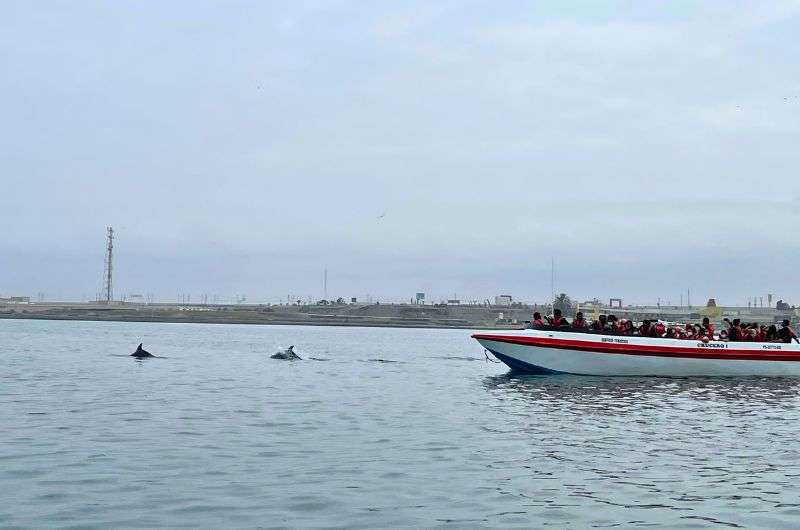
This is what the boat that will take you to Ballestas Islands might look like. See those dolphins?
The tour starts with a brief stop at El Candelabro, an ancient geoglyph on the Paracas Peninsula that dates back to 200 BCE. Even in foggy conditions, like we had, the guide will share the history and legends surrounding this massive desert symbol.
Tip: Interested in the ancient geoglyphs? I have a whole article about the Nazca Lines in Peru, the legends, and practical information if you want to plan a visit.
Wildlife viewing and the ‘aroma’ of the islands
As you approach the rocky islands, the smell will confirm your arrival—a blend of fresh ocean air, guano, and, well, rotting animal corpses—this is where nature prevails, after all. Just take it all in (well, maybe not all); this area has been a crucial part of the national reserve system for its environmental importance. For me, the smell took me back to Cape Cross in Namibia...oh the wonderful olfactory memories!
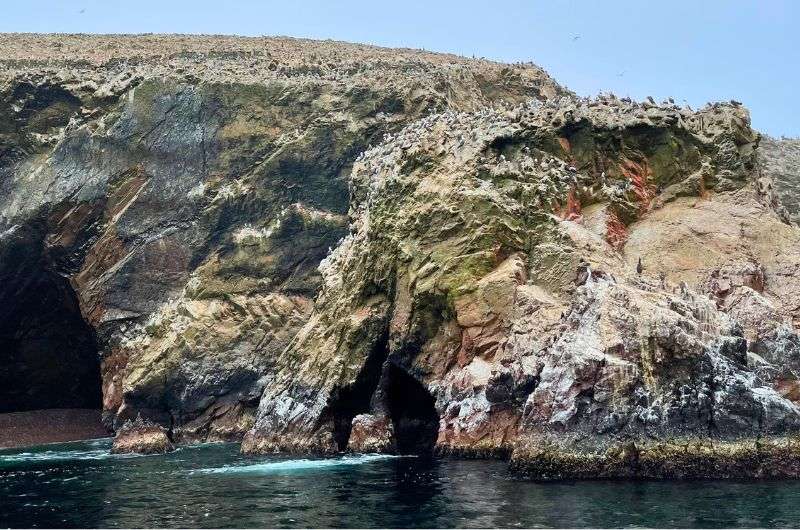
If you look closely at this photo, you'll see that the rock is full of birds
You’ll spend about 30 minutes gliding along the coastline, watching sea lions, fur seals, and penguins relax on the rocks or swim nearby. The boats also pass under arches and around rock formations for some amazing photo ops. Remember, though, you’ll be staying on the boat the whole time as landing on the islands is prohibited.
The whole trip lasts about 2 hours and often includes a fun dolphin escort back to Paracas.
6. Can you swim in Ballestas Islands? No, this isn’t the Galapagos!
This question seems to pop up over and over again, but no, you can’t swim at the the Ballestas Islands, for the same reason you can’t walk on the rocks—this is a nature reserve and by keeping the humans in the boats, they are protecting the marine life. Remember, this is “Poor Man’s Galapagos”—if you want to swim, you need to be a rich man and head to the real thing.
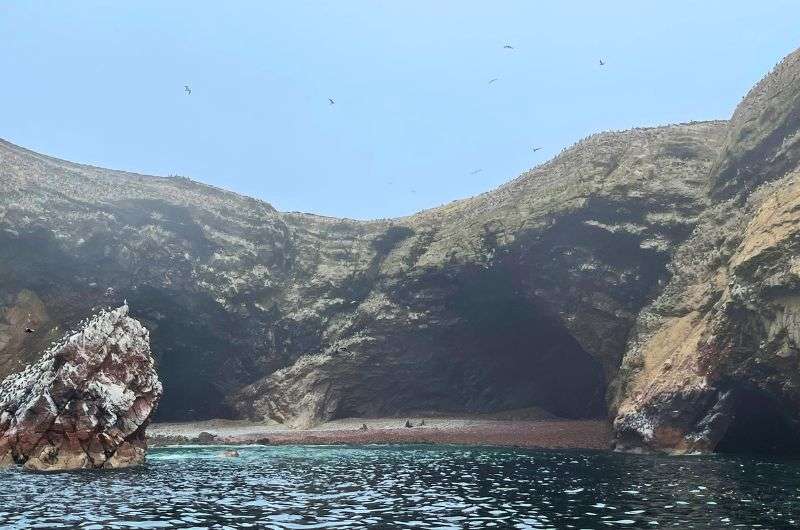
There's a beach, but it's occupied by sea lions. Humans aren’t allowed on shore
7. What animals can you see at Islas Ballestas? Birds, sea lions and penguins!
Seeing fauna that is atypical to most folks coming from the northern hemisphere is the one and only reason to visit the Islas Ballestas. Without the huge population of sea lions, Humboldt penguins, fur seals, blue-footed boobies, Guanay cormorants, and Peruvian pelicans, you’d just be looking at a pile of rocks on the Peruvian coast.
Maybe you’ll get lucky like us and spot dolphins alongside your boat. Dolphins tend to “chaperone” the speedboat tours to the islands, jumping around like water puppies and being generally adorable. A great addition to the otherwise not so exciting boat ride.
The massive sea lions are the island clowns, often performing for visitors, or just doing normal sea lion things that make tourists love them. They wobble around, plopping down for a tanning session, only to roll onto their backs to bask some more.
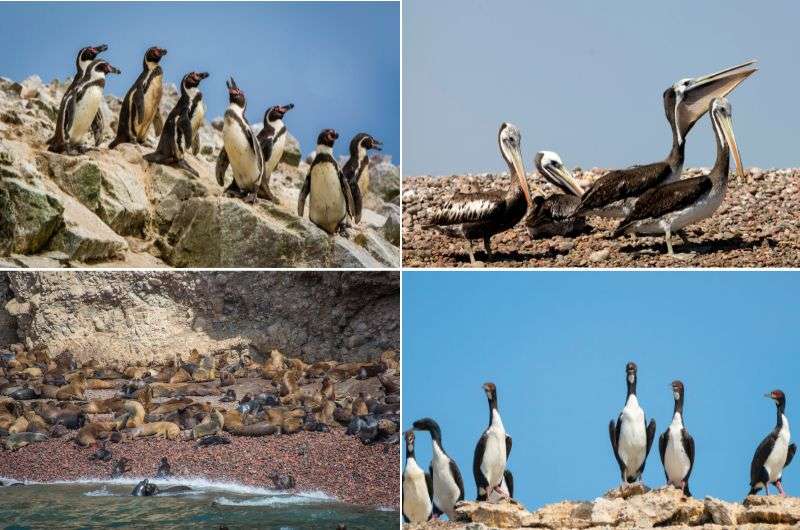
Quite a few species of animals live here and if you are lucky, you will meet them during your visit to Ballestas Islands
Fun fact: Male sea lions are massive, weighing up to 350 kg (770 lbs). Females are only half their size. You usually won’t see many young males hanging around, since the big fellas go after them in hopes of protecting their egos and their power over their harems. Most of the sea lions you’ll see are therefore females of all ages and their sugar daddies. The young guys have to find shelter elsewhere after a certain age.
Update 2024: Heads-up—recently (starting in 2023), an H5N1 avian flu outbreak hit the Ballestas Islands, wiping out a good number of seabirds and marine mammals. This viral apocalypse, courtesy of migrating birds, led to a serious dent in wildlife sightings. So, while you’ll still see plenty, don’t be surprised if some of the usual suspects aren’t out in full force.
8. Why is there so much wildlife at Ballestas Islands?
The reason so many animals call Ballestas Islands home is due to the Humboldt Current, a cold current sweeping the southern coast of Peru. It brings nutrients up from the ocean floor, providing a major food source for fish—and where there’s fish, the bigger predators come for the feast. The animals at Islas Ballestas Paracas gather here to snack and relax between meals.
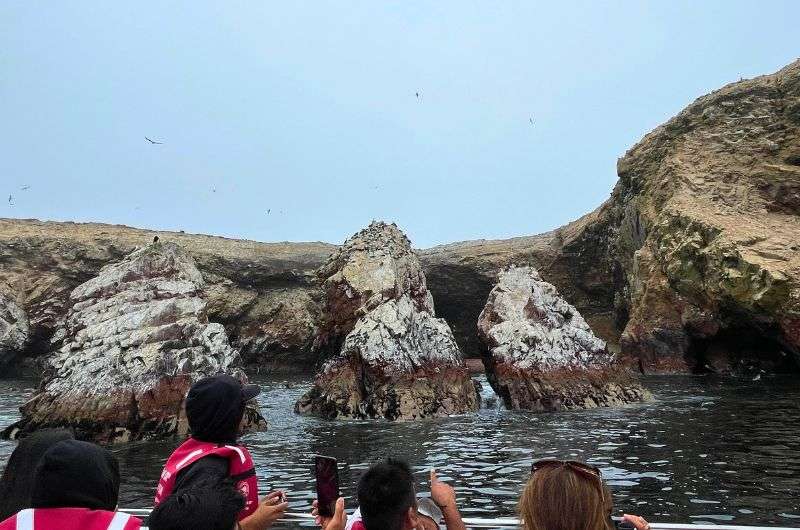
Penguins greeting us on our Ballestas Islands tour
It’s also the cold current that makes the water off most of Peru’s beaches just a tad too cold for swimming unless you’re a local kid.
9. How do you get to Paracas Peninsula? Drive 3 hours from Lima
Getting to Paracas from Lima is pretty straightforward. You’ll be driving about 250 km (150 mi) south along the Pan-American Highway, which takes around 3 hours if the traffic gods are on your side. It’s a decent road, and hey, you’ll have driven a section of the world’s longest highway. Road trip flex!
Pro tip: If you want to experience the Paracas National Reserve properly, a rental car is essential. We spent four hours driving the reserve’s 23 km (14 mi) route, and it’s worth every minute of the dusty trail. Plus, the freedom to explore the reserve at your own pace is priceless (okay, it costs quite a bit—but totally worth it).

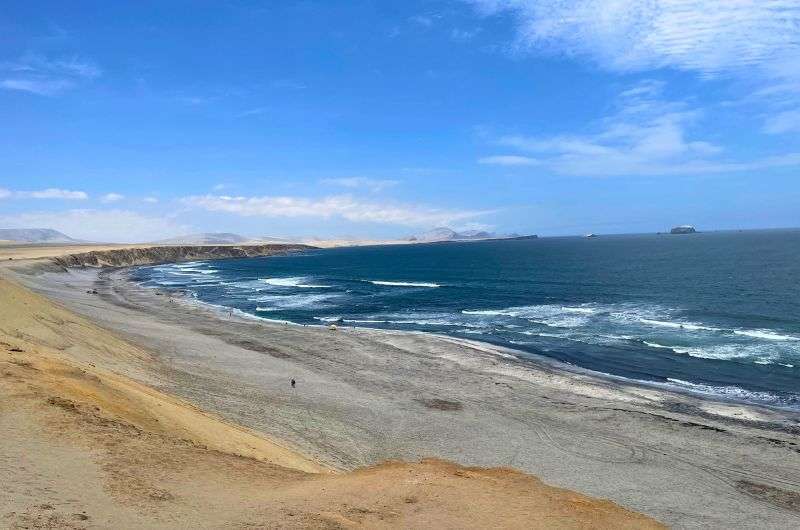
Paracas Reserve
For those without a car, buses also run from Lima to Paracas. Companies like Cruz del Sur and Peru Hop have frequent daily routes and take about the same 3 to 4 hours. It’s a smooth ride, but keep in mind that without a car, you’ll need to join local tours to get around the Paracas area.
Leaving Paracas: To keep things simple, drive back up to Lima, drop off the rental, and catch a flight to your next spot. For me, that was Arequipa. Yes, it feels like backtracking, but it’s way better than the alternative: driving 780 km (480 mi) over 13 hours, only to pay extra for returning the car at a different location. Hard pass!
10. When is the best time to visit Ballestas Islands?
There’s no bad time to visit the Ballestas Islands (unless you’re ornithophobic—then maybe skip it). Year-round, Paracas has mild temperatures and minimal rainfall, so you’re good to go in any season. Peak tourist season is during the summer months of December through February, with the largest crowds coming out to play in Paracas National Reserve around this time.
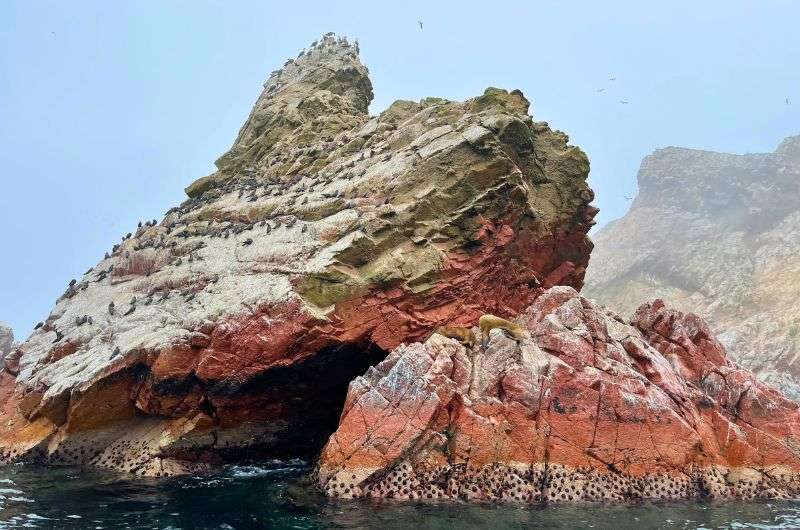
There is no bad time to visit Ballestas Islands
Wintertime (June to August) brings the most sea lions out on the rocks, but come in summer to hear the action—mating season has those huge males roaring like they’ve got something to prove.
Pro tip: If you’re hoping to go to Machu Picchu on the same trip, try to visit Peru in shoulder season (April–May or late September–October) to beat the crowds that tackle the Inca ruins during school summer holidays. I have an entire article on the best times to visit Machu Picchu, so read up on that before making up your mind.
As for the time of day: morning is your best friend at Las Islas Ballestas. The seas are calmer then, so you’re less likely to end up green-faced or regretting your breakfast by the time you reach the islands. I speak from experience—you don’t want to be the one clutching a “special lollipop” (seasickness remedy) 20 minutes in, like I did during a shark diving trip in South Africa.
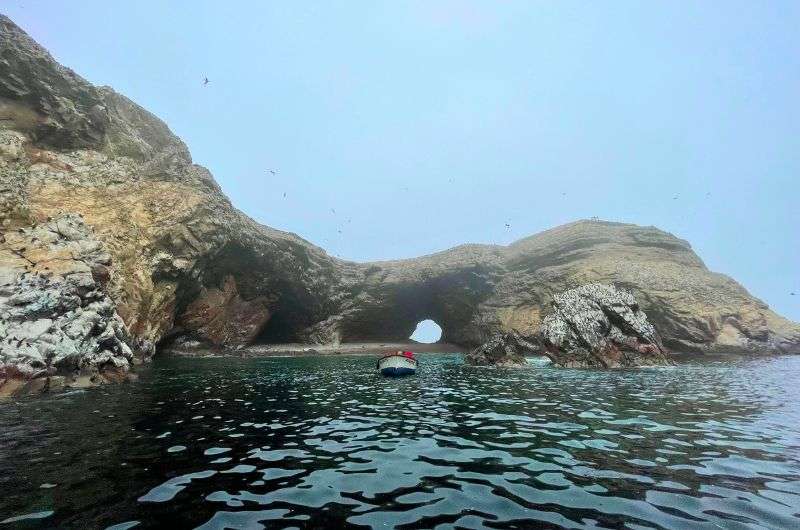
Don't worry about a bit of morning fog, it will likely clear up during your trip
And if you happen to hit some morning fog, don’t worry—it usually clears up by the time you get near the Islas Ballestas.
Sometimes, all you need to do is take the first step... I've filtered out the best hotels in Paracas for you
Save it for yourself to come back to later, or share with your friends on social media!
I've already planned your ititnerary for the trip, complete with my travel tips.
11. What’s up with the bird poop aka “white gold”? Guano mining on Islas Ballestas
Birds are the kings of the Islas Ballestas, they form a blanket on the rocks with their bodies. They are everywhere. If you’ve ever had a couple of pigeons favorite your balcony, you can imagine the other thing that blankets the islands: bird droppings. Or “guano” if you want to seem like you aren’t actually talking about bird shit.
The word guano comes from the Quechua word “wanu”, which means any type of animal excrement used as fertilizer.
Since the Inca times, guano has been used as a very effective agricultural fertilizer. It remained in high demand until the 20th century, when industrial manufactured fertilizers replaced the natural stuff.
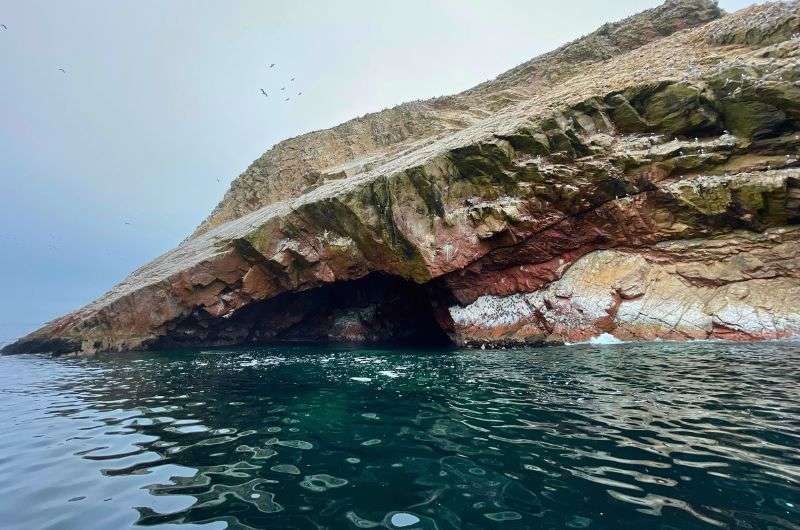
Guano aka expensive poop
In its heyday, the guano from the Ballestas Islands was on par with real gold, so the government had to establish rules, set up a national reserve and started handing out permits for the poop miners, as to not disturb the prized poopers too much.
Even nowadays, mining is only allowed for 3 months each year. I’m seriously interested to know what the Islas Ballestas would look like in a few years without guano harvesting—the annual poop layer can reach up to a meter (3 feet) deep! And apparently, there was a time in history when there were 50 m (160 ft) of guano on the islands! 50 meters! Was it just a blob of an island then? Did the islands converge into one big poop mound? I need answers!
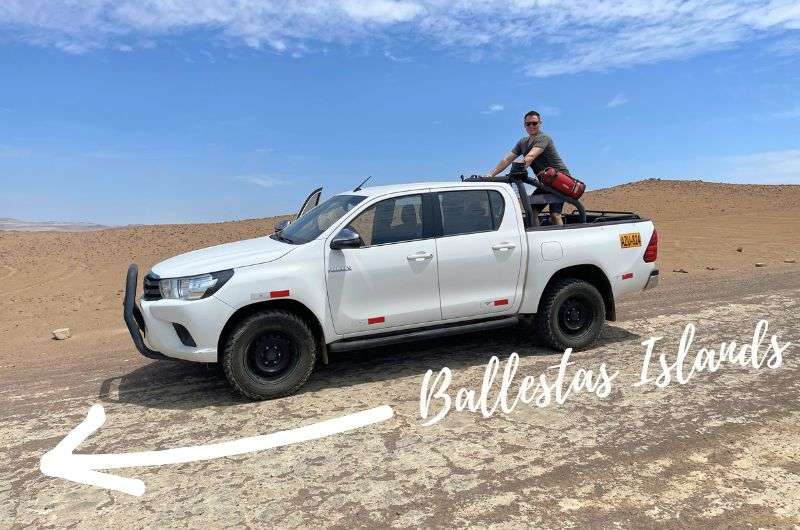
So, start your engines and off to Islas Ballestas!
That settles it. Animal scouting on an Islas Ballestas tour is officially on your Peru bucket list. What’s next? What about Machu Picchu or Rainbow Mountain? Here’s how I put together all of Peru’s highlights into one 2-week itinerary:

You might also be interested in reading:
- The Best 3-Day Cusco Itinerary with Sacred Valley Day Trip
- A 2-Week Peru Itinerary: A Day-By-Day Trip Plan
- Top 14 Handpicked Luxury Hotels in Peru (With Prices)
- The 10 Best Ruins to Visit in Peru
This post contains affiliate links. I earn a small commission if you make bookings through my links, at no additional cost to you. Thank you for your support!






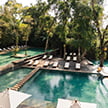
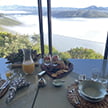


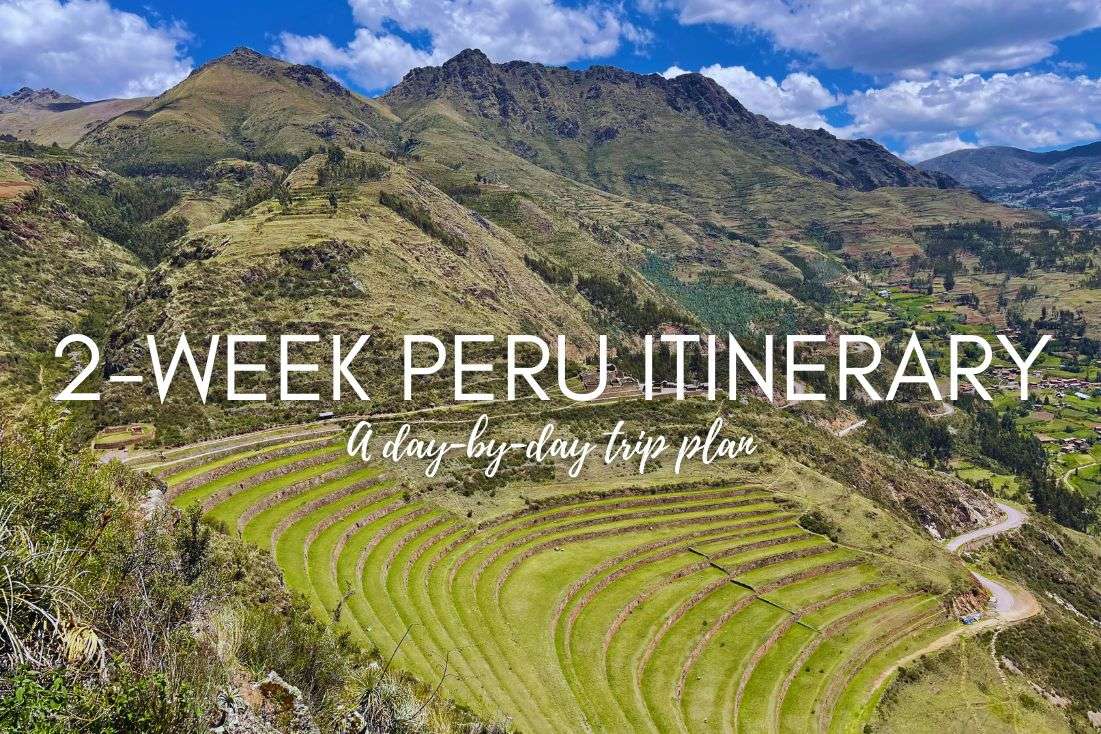
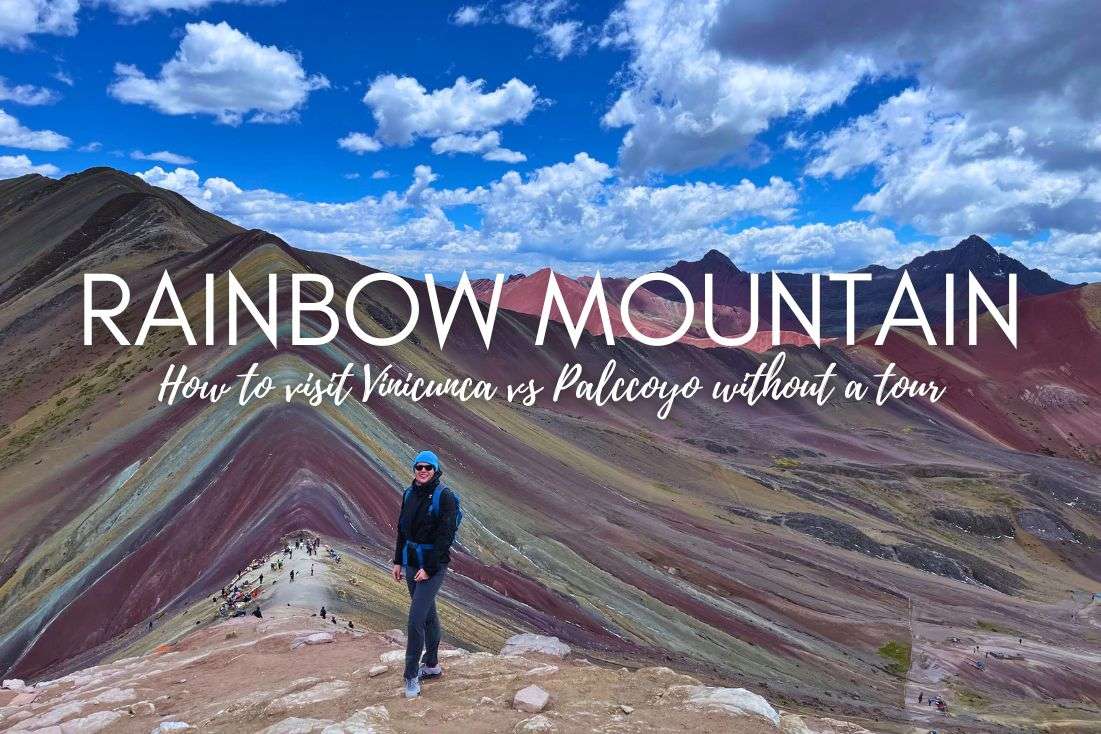
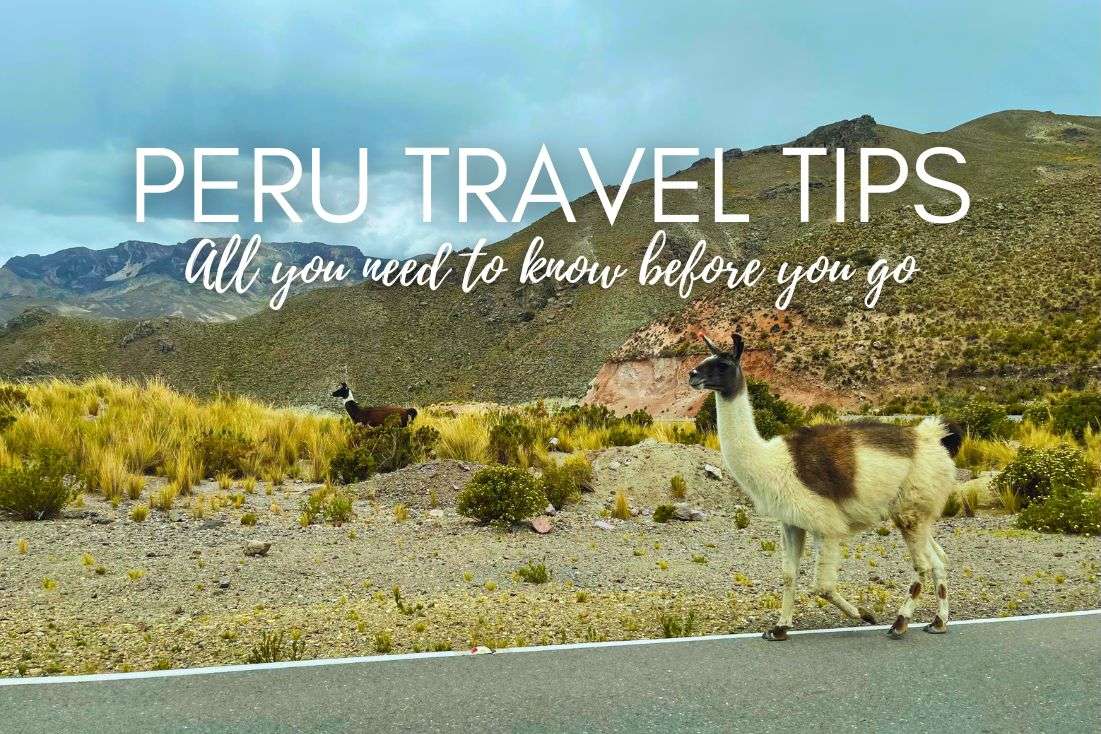



Comments | Thoughts? Give us a shout!